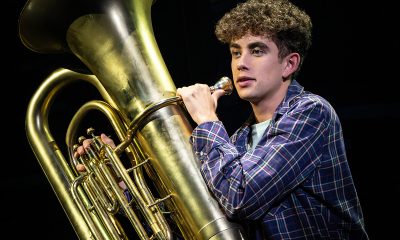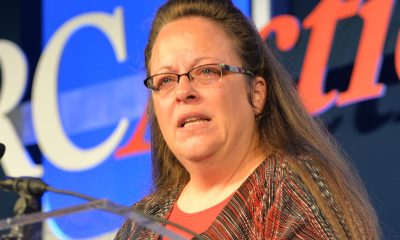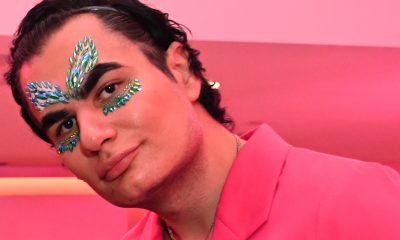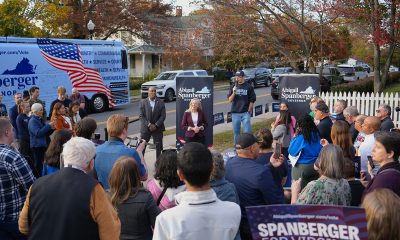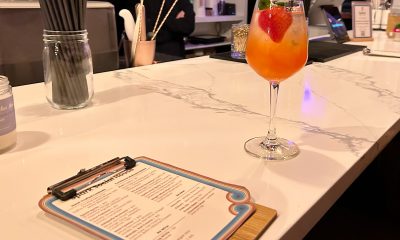Books
SPRING ARTS 2019 BOOKS: Stonewall 50th inspires new books
Dustin Lance Black shares memories of growing up gay and Mormon in ‘Mama’s Boy’

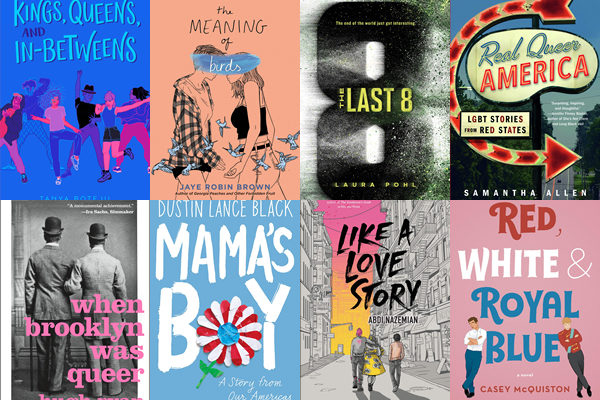
In “I.M.: A Memoir” (Flatiron Books, just released), American fashion designer Isaac Mizrahi shares his experiences growing gay in a Syrian Orthodox Jewish family, living through the AIDS epidemic and struggling with weight, insomnia and depression.
In their highly anticipated “Sissy: A Coming-of-Gender Story” (G.P. Putnam’s Sons, March 5), LGBT rights activist and host of MSNBC’s Queer 2.0 Jacob Tobia reflects on their relationship with gender from being labeled male at birth to identifying as genderqueer today.
“Love and Resistance: Out of the Closet into the Stonewall Era” (W. W. Norton & Company, March 5) brings together over 100 powerful photographs from the LGBT liberation movement, with a focus on queer activism in the ’60s and ’70s. Put together by Jason Baumann, Kay Tobin Lahusen and Diana Davies, the book will come out just in time for the 50th anniversary of Stonewall.
First released as a play at the Young Vic Theatre in London, Matthew Lopez’s “The Inheritance” (Faber & Faber, March 5) gives a glimpse into the lives young gay men living in New York City after the peak of the AIDS epidemic.
“When Brooklyn Was Queer: A History” (St. Martin’s Press, March 5) takes a new look at LGBT life in Brooklyn from the mid-1850s to modern day. Written by queer historian Hugh Ryan, the book explores LGBT history in New York beyond Greenwich Village, Harlem and the rest of Manhattan.
In “Real Queer America: LGBT Stories from Red States” (Little, Brown and Company, March 5), Daily Beast reporter Samantha Allen offers a glimpse into LGBT life in Red America. A trans woman who holds onto an undying love for “flyover country,” Allen shares the incredible stories of the activists and everyday Americans who chose not to leave their homes for the coasts.
In “The Last 8” (Sourcebooks, March 5), debut YA author Laura Pohl tells the story of Clover Martinez, a bisexual aromantic girl and one of the few survivors of an alien invasion on Earth. After the invasion, Clover meets a group of other teens her age but suddenly becomes conflicted about her decision to join them when she learns they don’t want to fight back.
Award-winning playwright and debut author Mariah MacCarthy introduces us to Jenna Watson in her novel “Squad” (Farrar, Straus, and Giroux, March 12). A cheerleader whose life turns on its head when the girls she views as her best friends stop inviting her out with them, Jenna starts to date a trans boy and explore life beyond cheer.
Award-winning writer and former public school teacher Mathangi Subramanian provides a glimpse into queer life in India in her first work of literary fiction. “A People’s History of Heaven” (Algonquin, March 19) tells the story of a group of five girls — queer, trans or otherwise marginalized — who fight back against the government officials who want to tear down their homes in the 30-year-old slum they call Heaven.
In “Unbecoming: A Memoir of Disobedience” (Atria Books, March 26), former U.S. Marine Captain Anuradha Bhagwati reflects on her experience as a bisexual woman growing up with strict Indian parents and her fight that ultimately allowed women to serve in combat roles in the U.S. military.
In “This One Looks Like a Boy: My Gender Journey to Life as a Man” (Greystone Books, March 31), Canadian writer and former police officer Lorimer Shenher shares the story of his transition, from his gender dysphoria and struggles with alcohol to his decision to be open about his identity and receive gender reassignment surgery in his 50s. “This One Looks Like a Boy” is Shenher’s second book, following “That Lonely Section of Hell: The Botched Investigation of a Serial Killer Who Almost Got Away.”
In “He Said, She Said: Lessons, Stories, and Mistakes from my Transgender Journey” (Harmony, April 2), famous beauty Youtuber Gigi Gorgeous shares the story of her transition, from her early years as a self-described “high school mean girl” to her decision to be open about her gender identity and sexuality.
Soraya Zaman’s “American Boys” (Daylight Books, April 2) showcases a visual representation of trans-masculine identity across the United States. With an introduction from trans porn star, director and icon Buck Angel, the book offers a new look at gender expression and what it means to be a man.
In “The Meaning of Birds” (HarperTeen, April 16), young adult author Jaye Robin Brown gives a glimpse into Jess’s world after the love of her life Vivi passes away. Jess abandons her plans to attend art school and finds some new friends as she processes her grief.
Gay screenwriter Dustin Lance Black won an Academy Award for his work on “Milk,” the 2008 biographical film that depicted the life of Harvey Milk. He also comes from a Mormon family that didn’t initially want to accept him. In “Mama’s Boy: A Story from Our Americas” (Knopf, April 30), he tells the story of his coming out and how his family remained close in the years following.
To celebrate the 50th anniversary of the Stonewall Riots, The New York Public Library put together “The Stonewall Reader” (Penguin Classics, April 30). With a forward from gay novelist Edmund White, the book shares diary entries, literature, articles and more from the years preceding and directly following the uprising.
Debut author Arabelle Sicardi is giving LGBT kids a few icons of their own in “Queer Heroes” (Wide Eyed Editions, May 7). The children’s book shares the lives of 52 prominent LGBT figures throughout history, from Audre Lorde to Frida Kahlo.
Debut author Tanya Boteju’s “Kings, Queens and In-Betweens” (Simon Pulse, May 7) mixes drag, identity and self-discovery. In the novel, Nima Kumara-Clark grows bored with her life in Bridgeton and heads to the other side of town for a change in scene. She becomes wrapped up in a world of drag and learns more about herself than she expected.
The much-anticipated coffee table book “We Are Everywhere: Protest, Power and Pride in the History of Queer Liberation” (Ten Speed Press, May 7) takes a sweeping look at queer history from the pre-Stonewall era to modern day. Written by the creators of the widely popular @lgbt_history Instagram account, Matthew Riemer and Leighton Brown, the book combines about 300 photographs with extensive historical narrative to provide a new and more comprehensive window into LGBT life and resistance.
In “Red, White & Royal Blue: A Novel” (St. Griffin’s Press, May 14), first-time author Casey McQuiston tells the story of America’s First Son’s meeting with the Prince of Wales and the international ramifications of the love the two develop for each other.
In “Like a Love Story,” (June 4) Abdi Nazemian details the teenage years of Reza, an Iranian boy who moves to New York City in 1989. Reza begins to date a girl named Judy but soon realizes he must find a way out of their relationship when he falls for her best friend Art.
Books
A history of lesbian workarounds to build family
Fighting for the right to have and raise kids
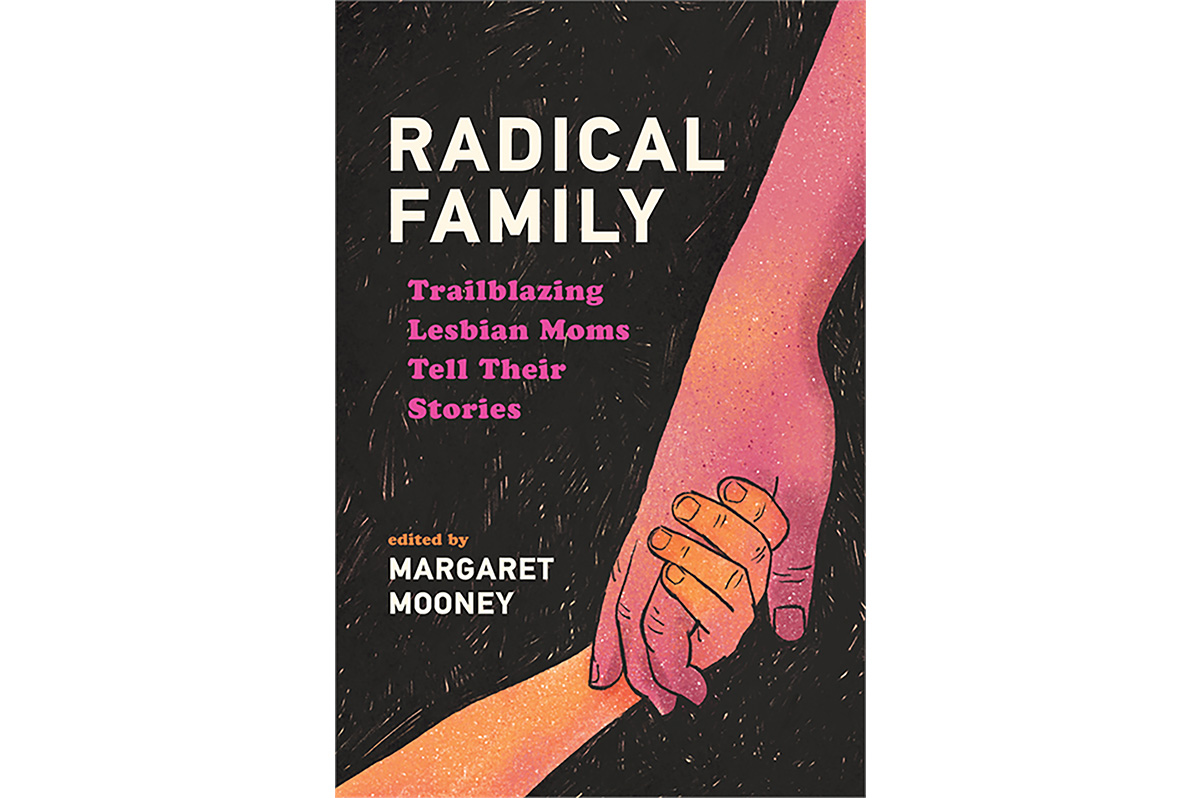
‘Radical Family: Trailblazing Lesbian Moms Tell Their Stories’
Edited by Margaret Mooney
c.2025, Wisconsin Historical Society Press
$20/150 pages
You don’t have a white picket fence with an adorable gate.
The other parts of the American Dream – the house in the suburbs, a minivan, and a big backyard – may also be beyond your reach. You’ve never wanted the joyous husband-wife union, but the two-point-five kids? Yeah, maybe that’s possible. As in the new book “Radical Family,” edited by Margaret Mooney, it’s surely more so than it was in the past.

Once upon a time, if a lesbian wanted to raise a family, she had two basic options: pregnancy or adoption. That is, says Mooney, if she was willing to buck a hetero-centric society that said the former was “selfish, unnatural and radical” and the latter was often just simply not possible or even legal.
Undaunted, and very much wanting kids, many lesbians ignored the rules. They built “chains” of women who handed off sperm from donor to doctor to potential mother. They demanded that fertility clinics allow single women as customers. They wrote pamphlets and publications aimed to help others become pregnant by themselves or with partners. They carefully sought lesbian-friendly obstetricians and nurses.
Over time, lesbians who wanted kids were “emboldened by the feminist movement and the gay and lesbian rights movement” and did what they had to do, omitted facts when needed, traveled abroad when they could, and found workarounds to build a family.
This book tells nine stories of everyday lesbians who succeeded.
Denise Matyka and Margaret McMurray went to Russia to adopt. Martha Dixon Popp and Alix Olson raised their family, in part and for awhile in conjunction with Popp’s husband. Gail Hirn learned from an agriculture publication how to inseminate herself. MC Reisdorf literally stood on her head to get pregnant. Mooney says that, like most lesbian parents then, she became a mother “without any safety nets…”
Such “struggles likely will feel familiar as you read about [the] desire to become parents…” says Mooney. “In short, these families are ordinary and extraordinary all at once.”
In her introduction, editor Margaret Mooney points out that the stories in this book generally take place in the latter part of the last century, but that their relevance is in the struggles that could happen tomorrow. There’s urgency in those words, absolutely, and they’re tinged with fear, but don’t let them keep you from “Radical Family.”
What you’ll see inside these nine tales is mostly happy, mostly triumphant – and mostly Wisconsin-centric, though the variety in dream-fulfillment is wide enough that the book is appropriate anywhere. The determination leaps out of the pages here, and the storytellers don’t hide their struggles, not with former partners, bureaucracy, or with roadblocks. Reading this book is like attending a conference and hearing attendees tell their tales. Bonus: photos and advice for any lesbian thinking of parenthood, single or partnered.
If you’re in search of positive stories from lesbian mothers and the wall-busting they did, or if you’ve lived the same tales, this slim book is a joy to read. For you, “Radical Family” may open some gates.
The Blade may receive commissions from qualifying purchases made via this post.
Books
Florida’s war on Black, queer lives hidden no more
New book ‘American Scare’ exposes truth of decades of erasure, attacks
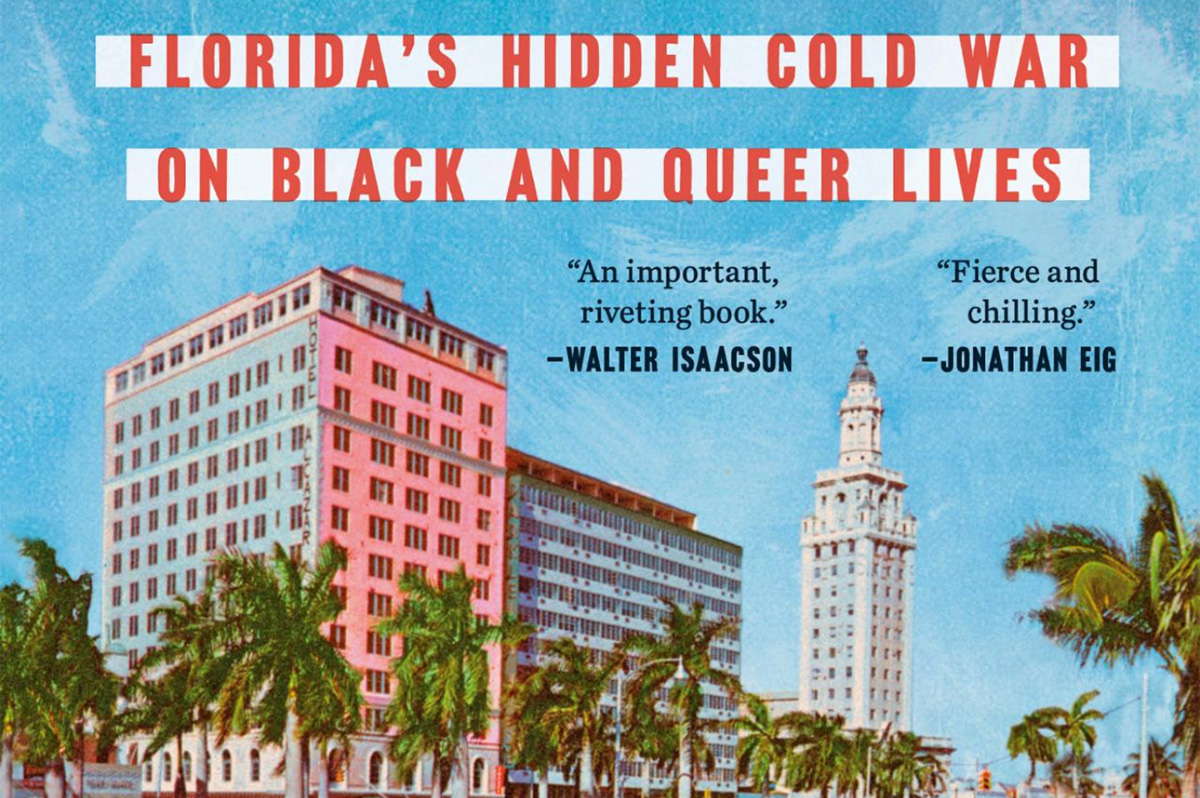
‘American Scare: Florida’s Hidden Cold War on Black and Queer Lives’
By Robert W. Fieseler
“What’s with Florida?,” Bobby Fieseler, disgusted, asked after completing his initial research into the vicious investigation of suspected homosexual teachers by the Florida Legislative Investigation Committee (FLIC) in the 1950s. How did the official animus toward all things queer happen in Florida, Fieseler pitched his publisher. We can be grateful Dutton gave him the green light for “American Scare, Florida’s Hidden Cold War on Black and Queer Lives.”

Fieseler’s book is a masterpiece of archive activism that begins in a rental van escaping Florida with some 20 boxes of historical documents meant to be seen by no one. The cartons contained a secret second copy of materials that had been held back from the jaws of the Florida State Archives in Tallahassee. Soon, more folders would surface with unredacted materials. “There are friends of Dorothy in any system,” he explains his archival detective work with a wink.
What’s with Florida? In the 1950s, it was all about legislators exposing politically helpless homosexuals to justify the committee’s investigations and budgets. The FLIC documents reveal the names of the accused “perverts,” the cops who raided the restrooms, the terrified queer informants and the professional interview techniques that would extract confessions from the victims. On another level, this was about old-school Southern racists determined to stop integration at all costs with intention to weave lies about Communist infiltration of the NAACP. Finally, Fieseler encountered first-hand an official determination to erase and lock-up this history. The statewide obsession with erasing history continues to this day. The Florida Department of Transportation this year painted over the community rainbow crosswalk memorial to the Pulse nightclub massacre victims in Orlando.
“American Scare” is such a fully documented investigation of what unfolded, it will be impossible to paint over the magnitude of this assault. The book bears witness in gory detail to the ruination of private people that exceeds in pure perniciousness the more famous “Lavender Scare.” Although the “Lavender Scare” purged many more individuals, it was about the U.S. Department of State firing public officials slimed as “pinstripe twerps.” The Florida investigations were a statewide purge using a dark politics of exposure of schoolteachers leading private lives. Fieseler quotes Remus Strickland, the head homo-hunter and executive director of the Southern Association of Intelligence Agents formed in response to the Supreme Court’s Brown v. Board of Education desegregation decision (1954), “If the Committee’s first pursuit (race and Communism) was a mandate, its second pursuit (homosexuals) was an opportunity.” Remus (that’s really this Southerner’s name) explained years later without remorse, “We first looked at the University of Florida for Communists….then we came back and did the homosexual purge.” Fieseler’s archival research reveals how far-right politicians and investigators like Strickland characterized Communists, African Americans (through the NAACP) and homosexuals as aligned “treasonously in a subversive societal infestation.”
The whole show was the creation of a wily, populist politician — a Florida “Pork Chopper” — Charley Johns, president of the Florida Senate. “Pork Choppers,” the rural, white Northern Florida wing of the old Democratic Party, controlled the state legislature from the 1930s to the 1960s. They were strongly opposed to integration, Communists, homosexuals, reapportionment and government reform. Johns owned the Charley E. Johns Insurance Agency, which insured state agencies. Fieseler’s history brings these North Florida politicians into grotesque focus. Their “power had lynched history,” he writes about his passion to excavate how they sealed and redacted the records so they would never face responsibility for their actions.
“American Scare” reveals how these Pork Choppers were willing to crush homosexuals as an instrument to maintain power. Their victims were isolated gay and lesbian teachers who could only plead for mercy, vanish or inform on one another. They were entrapped by the system itself. Fieseler tells the story of how Remus Strickland pulled Miss Poston, a physical education teacher out of her classroom surprising her with a tape recorder and a request to give a misdirecting statement about the prevention of child molestation. Suddenly Remus changed the subject: “Miss Poston, in your acts with Miss Bradshaw whom you referred to on this record, would she play the part of the aggressor…..She was known as the butch is that true?….Was there any occasion of any oral copulation?” He closed in for the kill, “Could there have been more than one time”? Miss Poston caved, “Possibly but if so only one more time.” The reel-to-reel tape is turning.
Concert pianist and music teacher William James Neal received the same taped grilling. Remus begins the interview, “You’re an educated Nigra,” confronting Neal with testimony he was a homosexual “nigra.” Years later, Neal remembered, “He told me I would never teach within the continental limits of the United States. He said he had proof I was a homosexual.” An African-American concert pianist, Neal had extensively toured the U.S. playing with major orchestras and hosting his own radio program in Florida. Neal had the self-respect and courage to take his illegal termination to the Florida Supreme Court. In 1962, the court ruled in his favor (Neal v. Bryant) handing Remus Strickland a devastating defeat, writing “The statements accused teachers allegedly made were obviously extracted under a threat of publicity.” Vindicated, William Neal nonetheless left Florida never to return.
There have been resolutions for an acknowledgment and apology. None have advanced through the Republican-controlled legislature occupied with a slew of “Don’t Say Gay” bills. “American Scare’ is larger than a small-bore history of investigations. It is the story of a Great Florida Teacher’s Purge launched to stop integration. Fieseler is done with redactions. He names names. If there is anything redemptive in this Southern hot mess, it is this: Bobby Fieseler, a queer historian, rescued the boxes and delivers readers their contents with history’s gale force.
The Blade may receive commissions from qualifying purchases made via this post.
Books
New book celebrates gay rights pioneer you’ve never heard of
Craig Rodwell was at Stonewall riots, helped start first Pride, and more
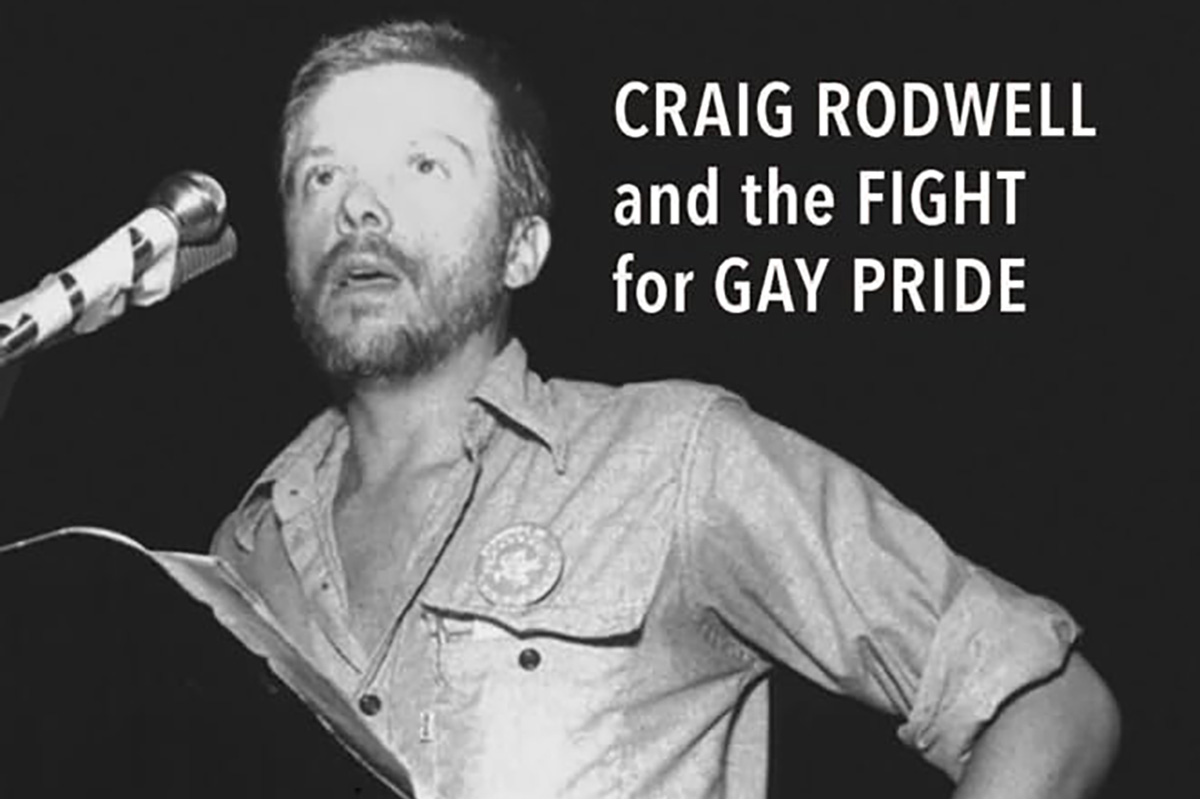
‘Insist That They Love You: Craig Rodwell and the Fight for Gay Pride’
By John Van Hoesen
c.2025, University of Toronto Press
$36.95/432 pages
Craig Rodwell is, sadly, not nearly as well known as he should be, given his accomplishments. He opened the first bookstore devoted to gay and lesbian literature. He led a chant of “Gay power!” at the Stonewall riots and contributed many articles about the struggle for equality and fair treatment. He helped organize the first Pride march. Thankfully, journalist John Van Hoesen’s new book, “Insist that They Love You,” tells Rodwell’s story.

Rodwell was born in Chicago in 1940 and spent his early years at a Christian Science-run children’s home. As a teenager, he roamed the streets, connecting with older men. One of those lovers was arrested and later died by suicide. He moved to New York to study dancing and joined the Mattachine Society, one of the first groups involved in “gay liberation.” He dated Harvey Milk, a challenging relationship, as the older Milk was still closeted while Rodwell was out and deeply involved in the cause. This was when being gay was a crime and public exposure risked getting fired and evicted.
In 1967, he opened the Oscar Wilde Memorial Bookshop (correcting anyone calling it a bookstore), which openly displayed gay and lesbian books and materials. It had large, inviting windows, different from the typical places gay people congregated. Many walked past it, working up the courage to go in. Once they did, they found a welcoming place where they could learn and connect with others. Van Hoesen writes about the diversity of the Bookshop’s employees, gay, lesbian, Black, and white, who all loved the sense of community and purpose Rodwell created.
That same year he helped form the group Homophile Youth Movement in Neighborhood and created their periodical HYMNAL. He wrote many articles for them and later, for QQ Magazine, describing the forces in straight “heterosexist” society, as he termed it, against gay people. He wrote about mafia-controlled gay bars, including the Stonewall Inn, seedy places that overcharged for watered-down drinks. He decried how the law was used to persecute gay people, describing his arrest for wearing “too-short” swim trunks. He explained what to do if arrested: never speak without a lawyer present and never provide names of other gay people. Van Hoesen helpfully includes these articles in an appendix.
Rodwell’s history of activism is impressive. In 1966, he participated in a “sip-in” protesting a law forbidding bars serving alcohol to homosexuals; it took three attempts before one refused to serve him. He and his partner happened by the Stonewall Inn when the riots began, offering the protesters support. He helped lead a group that picketed Independence Hall in Philadelphia every year as an “Annual Reminder,” arguing with organizer Frank Kameny over the required conservative dress code.
He organized the first Pride march in 1969. One of the biggest challenges was getting all the different gay rights groups, with different objectives, to work together. The police only issued the permit the morning of the march. Among the book’s photos is one of Rodwell and his partner afterwards, looking exhausted but happy.
Rodwell never sought the spotlight for his work, always working with others. Yet he often chaffed against many of the organizations’ philosophies, one of the few Mattachine Society members to use his real name. He refused to sell pornography in the Bookshop, or work with gay business owners funded by the mob. He even threw some customers out. Let’s hope this biography shines more attention on this lesser-known leader of the gay rights movement.
The Blade may receive commissions from qualifying purchases made via this post.
-

 U.S. Supreme Court5 days ago
U.S. Supreme Court5 days agoSupreme Court rejects Kim Davis’s effort to overturn landmark marriage ruling
-

 District of Columbia5 days ago
District of Columbia5 days agoCapital Pride files anti-stalking complaint against local LGBTQ activist
-

 Politics2 days ago
Politics2 days agoPro-trans candidates triumph despite millions in transphobic ads
-

 Dining4 days ago
Dining4 days agoSpark Social House to start serving alcohol





